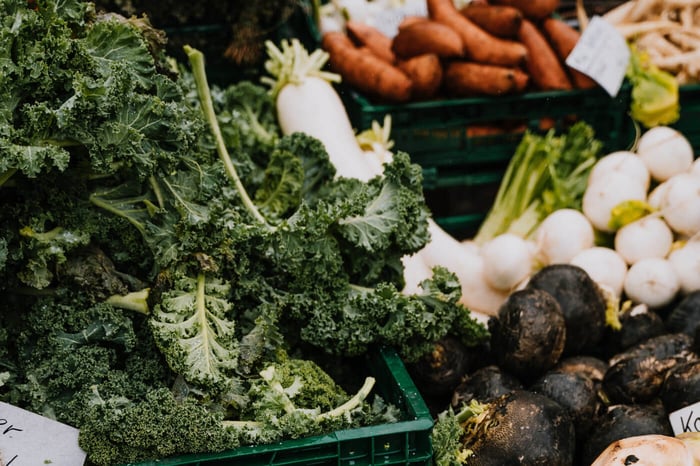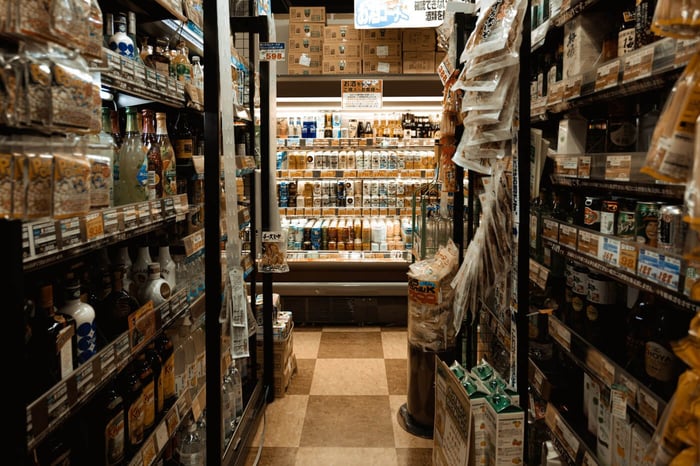‘Tis the season for root vegetables, brussels sprouts, and pumpkin pie. Eating seasonally is a powerful way for individuals to join the growing national and international community that is taking strides for positive environmental and social impacts through food choices.
Choosing to focus on seasonal eating can greatly reduce your carbon emissions. The Center for Sustainable Systems at the University of Michigan reports that food accounts for 10%-30% of a household’s carbon footprint. Currently, the average meal in the U.S. travels about 1,500 miles to get from farm to plate, which is approximately the distance from the northern border of the U.S. with Canada to the southern border with Mexico. Imagine that driving distance times three meals a day, 365 days a year and that adds up. In reality, a lot of food travels much longer distances by ship from overseas, especially if it is out of season.

If you are eating local, it means you are eating in season. Typically, eating locally connects consumers to farmers and you get to learn more about where our food comes from and the people and places behind it. When what we are eating is grown close to home, it can be better taken care of and production practices are more traceable. In the case of food, this may mean that fewer fertilizers and pesticides are used, which have influences not only on environmental health but also on human health, largely due to effects on water quality.
If you don’t have access to a farmer’s market or CSA (Community Supported Agriculture) throughout the year, it still makes an impact to consider what is being grown regionally and do your best to shop accordingly. Eating seasonal foods that can be grown in your local region is not only a treat for your taste buds, it’s also reported to have higher nutritional value.

For this Holiday Season and beyond, check out these Top 3 How to Eat Seasonally Sustainability Tips… You’ll not only be doing good for the environment, your taste buds will thank you!
1. This November and December, get back to the roots
This time of year in the U.S. we are rolling in delicious root vegetables, such as potatoes, yams, beets, and parsnips. Of course, don’t forget pumpkins- or rather the pumpkin pie. Broccoli and citrus are also coming to fruition this time of year. Really, the United States varies widely in climates, so if you are looking to zero in on eating seasonally in your state, check out the Seasonal Food Guide website, where you can plug in any state and time of year and see what food is in season near you.
2. Longer nights, good reads
With winter on the horizon and longer nights settling in, check out these cookbooks and good reads about eating seasonally:
- Simply in Season: A World Community Cookbook, by Cathleen Hockman-Wert and Mary Beth Lind
- “The Year of Eating Locally” chapter in Deep Economy, by Bill McKibben
- Gather: Simple, Seasonal Recipes, by Gill Meller, Head Chef at River Cottage
- In Season: More Than 150 Fresh and Simple Recipes from New York Magazine Inspired by Farmers' Market Ingredients, by Robin Raisfeld and Rob Patronite
- Eating with the Seasons: How to Achieve Health and Vitality by Eating in Harmony with Nature, by Paula Bartimeus
… and remember that shopping at your local bookstore, hitting up local used bookstores, or heading to the library whenever possible supports your community and the environment.
3. Eat for the region
Supporting agriculture that is fit for the climatic conditions it is grown in can yield positive impacts for our interconnected communities. For example, it takes over 400 gallons of water to produce one pound of almonds. California, amidst its challenges of droughts, wildfires, and declining river health due to low water levels and high use of water for agricultural production, produces a majority of the world’s almonds, 70% of which it exports internationally. Seeking out drought-resistant crops in water-short regions and water-loving crops in water-saturated regions is another impactful way to not only eat for the season but eat for the region.






